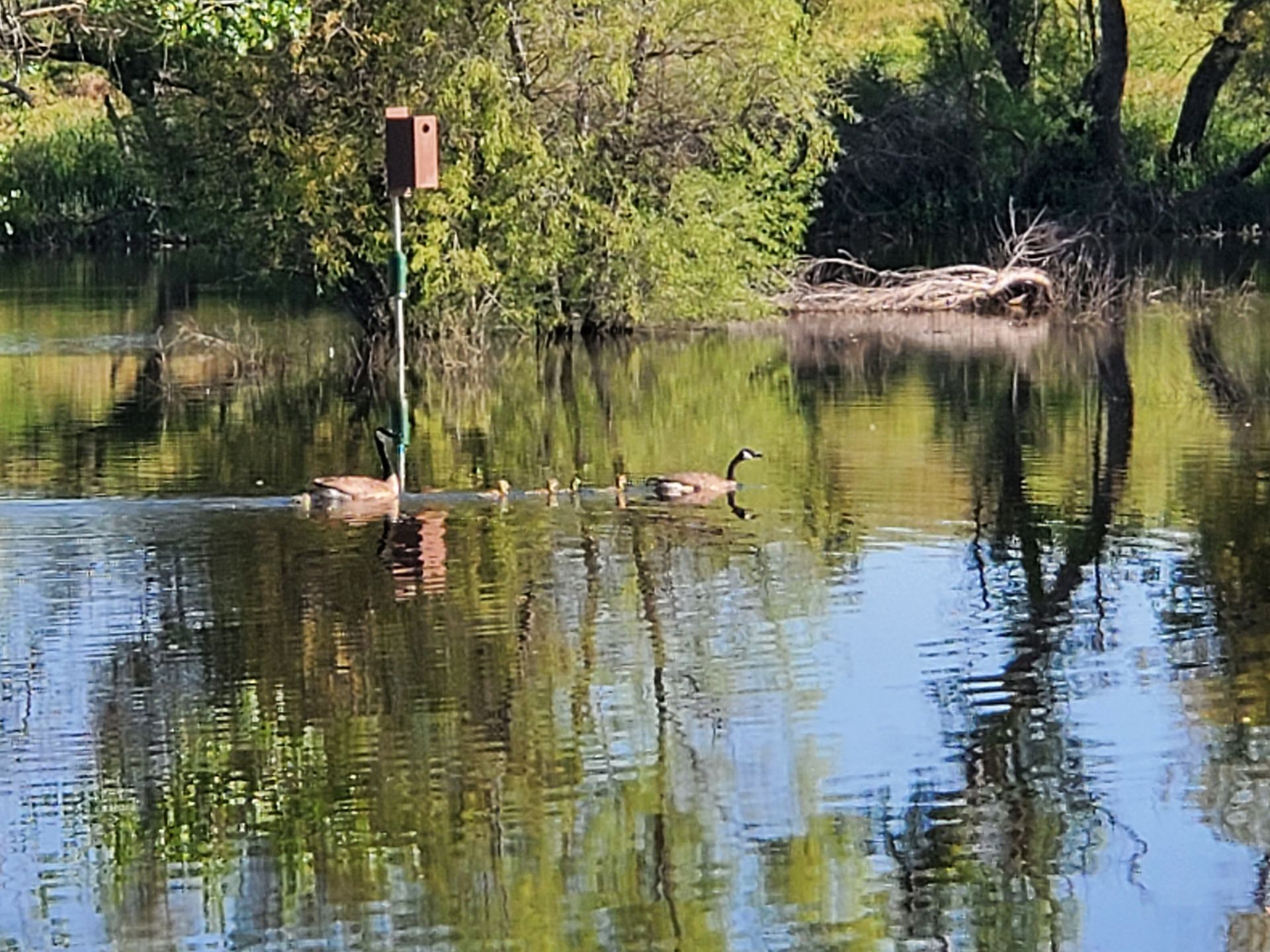Springlake second graders visit WRPP

The late spring is offering a bounty of things for students to see when they visit the Preserve right now, as the second graders from Springlake Elementary witnessed on May 11. This highly engaged group of students came out for a day of learning and were able to observe all the wonders of the Preserve while they were at it. They were not disappointed. Our resident Red-Tailed Hawk finally hatched her egg and students were able to use their binoculars to peer up at the tiny, fluffy baby bird, who was just as curious about them, peaking it’s head up and over the nest to look at all the kiddos who’d come to visit. Students also spotted a Killdeer nest just off the path and the remnants of several recently hatched goose eggs.
As we traveled further along the trail, we spotted evidence of coyotes that had likely visited throughout the night, as well as egrets, red-winged black birds, coots, and lots of turtles! The students were so enthusiastic about everything they saw and eager to take part in each of the activities.
The Springlake second graders participated in the Ecosystem and Adaptations trails. During the Ecosystem trail, students collected observational evidence about two different habitats at the preserve- the grasslands and the permanent wetlands. Students observed the different community members (plants and animals) living in each habitat and discussed the resources available in each space. They also made claims about what might cause such differences based on their observations. At the end of their time on the Ecosystem trail, students played a game called “Out-Competed” in which they each took on the role of a community member in the Preserve and competed for various resources.
The adaptation trail had students focus on various traits birds have that help them survive their environments. The Preserve is home to many different species of birds with many different adaptations- from raptors with their sharp talons and beaks to seed-eating blackbirds with their small, triangular beak and perching feet. After students recorded numerous observations in their field books, they tested out the attributes of various beaks in the “What Can You Eat?” game. Using a variety of different tools to simulate bird beaks (everything from tweezers to skewers), students hunted for different foods such as (Swedish) fish and (rubber band) worms. They soon discovered that some tools worked better at catching certain prey, much like how certain bird beaks are well-suited to catch and eat particular food sources.
By the time students left the Preserve, they were worn out and hot from the sun but they were full of excitement about everything they had seen, done, and learned. Students couldn't wait to return and kept talking about how much they looked forward to their next visit out. Parents and teachers, too, looked forward to another opportunity to visit the Preserve and enjoy all natural beauty it has to offer.
RECENT ARTICLES






